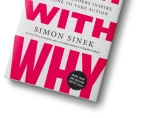
Do you ever notice how your favorite movies, novels, or TV shows feel satisfying without being able to explain exactly why? That sense of complete storytelling—from that first sparkle of an idea to the final emotional pulse—often comes from a tried-and-true structure known as Freytag’s Pyramid.
First developed by 19th-century dramatist Gustav Freytag, this model breaks every great story into five key acts: Exposition → Rising Action → Climax → Falling Action → Denouement. It’s a storytelling map that works whether you’re drafting a Shakespearean play, a bestselling novel, a Pixar film, or your next YouTube script.
In this article, we’ll explore each stage in detail with clear examples, writing exercises, cultural references, and practical tips you can apply directly to your work. By the end, you’ll not only understand Freytag’s Pyramid—you’ll know how to use it practically to build richer, more satisfying stories.
We’ll walk step by step through each phase, then get into troubleshooting tips, misuses to avoid, and examples from popular culture. This is your roadmap to better storytelling.
Origins & Purpose: Why Freytag’s Pyramid Still Matters
- Gustav Freytag, a German playwright, first described this five-part structure in the mid-1800s based on his analysis of Greek tragedies and Shakespeare’s plays.
- His pyramid captures the emotional journey of a story—engaging us, pulling us toward a climax, and leaving us feeling resolved.
- Today, it’s a go-to framework not just in theater and literature, but also in screenwriting, marketing storytelling, journalism, and even presentations.
Basically, it aligns storytelling with how humans experience narratives: building anticipation, reaching a peak, and then coming down to rest.
Your Story. Our Words.
Got a brilliant idea but need help putting it into words? Our ghostwriters bring your vision to life—confidentially and professionally.
Hire a GhostwriterThe Five Parts of Freytag’s Pyramid: Explained with Real Examples
Exposition – Setting the Stage
The exposition is your foundation. It introduces your characters, setting, and initial problem. It’s like welcoming your reader into your world.
Key goals:
- Show everyday life and character traits.
- Hint at the central conflict or question.
- Engage readers quickly.
Example: Harry Potter and the Sorcerer’s Stone opens by showing the mundane world of the Dursleys—a perfect contrast to whatever magic awaits. We immediately identify with Harry’s loneliness and curiosity.
Writing Tip: Limit exposition to what matters most. Introduce your characters and world in context, not as a separate info-dump.
Rising Action – Building the Heat
The rising action is a series of obstacles, choices, and stakes that raise tension and reveal character.
Key goals:
- Introduce complications.
- Develop character arcs.
- Make the stakes clear and personal.
Example: In The Hunger Games, rising action includes training, challenges in the arena, alliances, and the pressure of survival. Every moment intensifies emotional stakes and exams a character’s resolve.
Writing Tip: Ask “What happens next?” after each scene. If raising the stakes feels difficult, introduce something new: a secret revealed, a friend’s betrayal, or an internal crisis.
Climax – The Tension-Breaker
The climax is the emotional and narrative peak. It’s what readers wait for—the make-or-break moment.
Key goals:
- Show your character by making a transformation or decisive action.
- Keep reader emotions on high alert: fear, excitement, hope.
- Deliver payoff for the building tension.
Example: In Titanic, when Jack and Rose cling to that floating door, it’s raw, suspenseful, and undeniably emotional. Everything comes down to that split decision.
Writing Tip: Ensure your climax tests your hero in the most consequential way. This is where internal and external conflicts unite.
Make Every Word Count
Editing isn’t just about grammar. It’s about clarity, flow, and impact. Let our experts refine your manuscript to perfection.
Get Expert EditingFalling Action – Winding Down
The falling action shows the consequences of the climax and starts bridging toward the new normal.
Key goals:
- Reveal emotional outcomes.
- Tie up the remaining loose threads.
- Allow readers to breathe.
Example: In Moana, after defeating Te Ka, Moana and Maui rebuild the island together. The journey ends not with a flourish but with gradual emotional fulfillment.
Writing Tip: Let characters reflect and demonstrate change. Don’t rush—rushed resolutions often feel hollow.
Denouement – The New Normal
The denouement is the final wrap-up. This shows how the world has changed and gives readers emotional closure.
Key goals:
- Show how characters have grown.
- Offer hope or a hint of the future.
- Leave the story emotionally resolved (unless aiming for a cliffhanger).
Example: At the end of The Wizard of Oz, Dorothy returns home with a deeper appreciation for family and belonging—full circle.
Writing Tip: Show, don’t tell. A small moment can encapsulate a big transformation.
Why the Pyramid Works: Emotional Pacing & Reader Trust
Stories must have emotional rhythm. Freytag’s Pyramid delivers that:
- Establish empathy and context.
- Create suspense and investment.
- Pay off built-up tension.
- Guide readers toward resolution.
- Return them to daily life—with insight and emotion intact.
This model respects readers—rewarding their time with satisfying structure.
From Manuscript to Market
We handle everything—ISBN, metadata, printing, and global distribution. You stay creative. We make it official.
Start PublishingComparing Freytag’s Pyramid & Other Story Structures
- Three-Act: Similar but simpler: Setup / Confrontation / Resolution.
- Hero’s Journey: Divided into 12 stages—from the Call to Return.
- Seven-Point Plot: Starts from resolution backward to exposition.
Use Freytag when your story thrives on a central emotional peak. Adapt or mix structures as needed.
Common Mistakes Writers Make with the Pyramid
- Overstuffing the exposition, leaving no room for rising tension.
- A weak or confusing climax—no stakes or emotional impact.
- Jumping from climax to end without a satisfying falling action.
- No character change—denouement feels flat if nothing has shifted.
How to recover: Map your story beats visually. Ask: Does each stage show growth and move the plot?
Turn Your Book into a Bestseller
We help you reach the right audience with SEO, PR campaigns, Amazon boosts, and personalized author branding.
Launch Your Book CampaignPlotting With Freytag: A Step-by-Step Guide
- Write a one-sentence premise—who, what, why.
- Add the exposition—introduce your character and world.
- List 2–4 rising-action events that complicate things.
- Define the climax—your turning point.
- Add 2–3 falling action scenes—reveal consequences.
- Finish with a denouement—show change and closure.
Revise each beat to ensure flow and purpose.
Exercises to Build a Story with the Freytag Pyramid
- Flash GIF stories: Write each stage as a microfiction (100 words max).
- Story reversal: Start with a climax, you know, then craft exposition and obstacles that lead there.
- Mix & Match: Combine two character arcs that mirror Freytag’s structure—for dual protagonists or twins.
Freytag in Pop Culture
- Movies: Frozen 2, Black Panther, Jurassic Park
- TV: Sitcoms often pack a mini-Freytag in 22 minutes—exposition in the cold open, rising conflict, climax in Act 2, resolution.
- Songs: Emotional crescendos in rock ballads often follow a pyramid arc.
Patterns recur because they feel emotionally right—subconsciously.
Advanced Use: Subverting the Structure
You don’t have to follow the pyramid perfectly. Writers can:
- Start at climax (in medias res) and fill in backstory later.
- Have multiple climaxes for ensemble stories.
- Use a reversed pyramid for unusual emotional arcs.
The key is emotional clarity: ensure the reader can trace the arc—even if it surprises them.
Troubleshooting Freytag in Your Draft
- Exposition dragging? Cut or integrate the action sooner.
- Climax feels weak? Raise the stakes or let your character do something unexpected.
- Falling action fades? Combine scenes or add reflection points.
- Denouement feels tacked on? End with equilibrium and emotional resonance.
Re-read each section with the pyramid in mind.
Final Words: How to Apply the Pyramid Daily
- When outlining, draw the arc visually.
- In drafts, ask: “Have I hit the midway tension point?”
- In edits, identify flat spots and revitalize them with emotional tension or payoff.
Freytag’s Pyramid gives shape to chaos—it’s not limiting. It’s a lantern lighting your path to memorable storytelling.
Conclusion: Your Story Deserves a Pyramid of Emotion
From beloved inner-city folktales to blockbuster sci-fi, story form matters. Freytag’s Pyramid offers a proven structure: introduce, escalate, climax, resolve, and reflect.
Next time you’re stuck, visualize your pyramid. Label each scene. Tune your tension. Don’t be afraid to bend the structure—but never ignore the emotional journey.
Stories aren’t just entertainment—they’re threads that connect hearts, teach lessons, and ignite imagination. You’ve got a story in you. Now shape it with care. Your readers will feel it.
More Related Blogs:
25 Most Used Literary Devices in Poetry with Examples
What is Theme in Literature: Understanding Theme With Examples






























